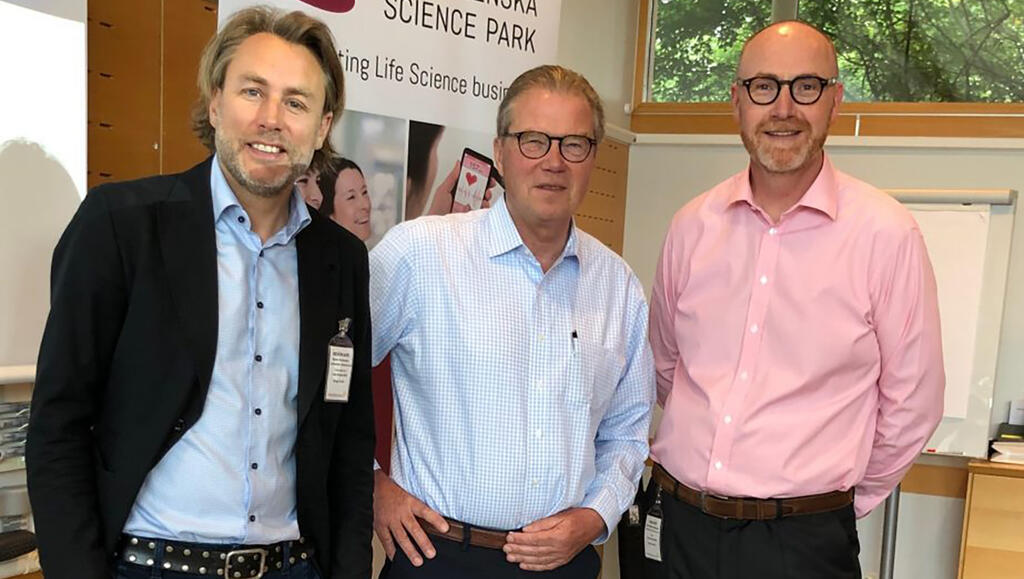New report: Redrawing the map for industry in the Gothenburg Region
Large companies want to open the door for start-up companies who are challenging themselves. And clusters within vehicles, ICT and life science are converging. Some 20-odd well-known companies provide a picture of Gothenburg Region's business sector in a report from Lindholmen Science Park and Sahlgrenska Science Park.

"The most important thing from this report is that it what is good for the automotive sector is also good for life science and companies like AstraZeneca and Ericsson."
Those are the words of AstraZeneca board chairman Leif Johansson when he introduced the report Sector convergence – a significant growth opportunity at a breakfast meeting on Monday after the Midsummer holiday.
Leif Johansson draws on his extensive experience from years as the CEO for the Volvo group and chairman of the board for Ericsson, as well as his current role as chairman of the board for AstraZeneca.
Coherent picture
The rapid transformation of the business sector that is currently in progress provides a coherent picture in the report, showing how the large companies and the traditional sectors face new challenges. If handled correctly, this entails good growth possibilities in the Gothenburg Region.
"Everyone essentially gives the same picture of what is happening and the possibilities that are developing. There is also a strong demand from industry for collaboration across sectors. It creates an entirely new business environment," says Carl-Peter Mattson, responsible for investor relations at Sahlgrenska Science Park and one of the authors behind the report.
Clear convergence of sectors
The conclusions are based on survey responses and interviews with persons in leading positions at large companies in the Gothenburg Region, primarily within the areas of mobility, telecommunications, IT and life science. This includes Stena, SKF, AstraZeneca, both Volvo companies and Ericsson.
A clear conclusion is that a convergence of sectors is in progress. Sectors which have been traditionally strong in the Gothenburg Region are approaching each other with the ambition of sharing expertise that can be used in an entirely new setting.
"We are giving western Sweden and the Gothenburg Region an advantage on the global level. We have a strong tradition of innovation and culture of cooperation on which we can build," says Martin Svensson, Co-Director of AI Innovation of Sweden at Lindholmen Science Park. He is the other author of the report.
- 75 per cent of the companies in the study identify collaboration across sectors as extremely important or very important for product development.
- 85 per cent think that it is extremely or very important to involve disruptive start-up companies in their own activities in the long term.
This is described as a way to increase pressure to innovate, to be challenged in the corporate culture and to gain access to new technology and competence.
Experience is needed
However, not everyone has come as far along in adapting their organisations to the changes. Only about ten per cent consider themselves experienced in collaborations with start-up companies.
The internal organisation and lack of time are the main challenges.
At the same, time, great expectations are place on independent arenas for collaboration, such as science parks, to be catalysts for such collaborative work. 58 per cent consider it to be the most important priority and an additional 30 per cent identify it as one of the three most important strategic priorities.
AstraZeneca's chairman Leif Johansson emphasises cluster environments, the importance of fundamental research for innovations and cross-sector collaboration as success factors. The Gothenburg Region relatively small size from an international perspective is absolutely not a problem according to him.
"We have always been a smaller city. We still have some of the world's largest companies and two of Sweden's largest. We are big enough and fully capable."
The report, which also addressed the question of access to local risk capital as a piece of the puzzle that is missing in the ecosystem, concluded with six clear observations:
- Convergence between sectors is transforming the entire business environment.
- The growing need for disruptive innovation requires that knowledge is shared across sectors.
- There is an increasing need to share risks in highly technical innovations.
- Industry is looking for opportunities to utilise innovations in many different ways through collaborations that complement each other and where the need of exclusivity decreases.
- New forms of collaboration are developing, often under the influence of the trend of open innovation.
- The economy of sharing is spreading to new parts of the business sector.
Text: Kenny Genborg, Sahlgrenska Science Park

